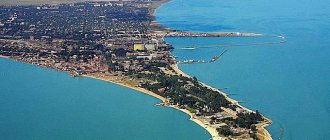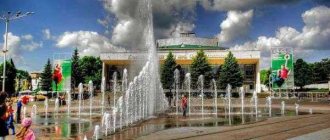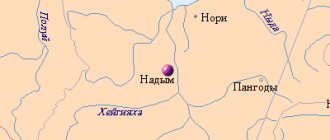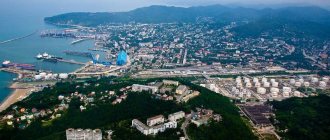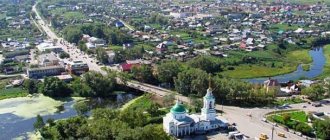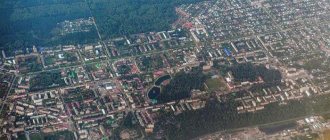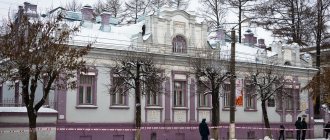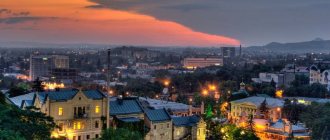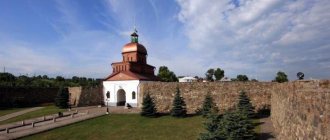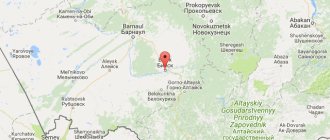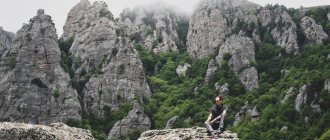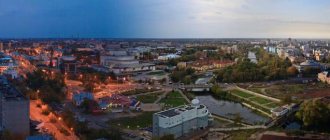One of the popular resorts in Kuban is the city of Yeysk, located on the shores of the Azov Sea, 170 km from Rostov-on-Don and 250 km from Krasnodar.
The city is located on the Yeisk Peninsula, washed on both sides by the sea. On the one hand, this is the Beysug Estuary and the Sea of Azov, on the other, the Taganrog Bay and the Yeisk Estuary, into which the Yeya River flows. Sand spits Yasenskaya, Yeiskaya, Kamyshevatskaya, Dolgaya extend from the peninsula into the sea.
Near the city there is Lake Khanskoye, whose sulfate mud is used in sanatorium treatment.
It is believed that Kuban begins with Yeisk, as the northernmost city of the Krasnodar Territory.
Climate
The fame of the southern resort was created by Yeysk’s excellent climate; one of its features is the absence of sudden temperature changes. Where the city of Yeysk is, the mild winter does not last long, snow usually falls for 1-2 weeks, but frosts do occur.
But summer begins in May and ends at the end of September. The average air temperature in May and September is +17, in the summer months +25. With an air humidity of 60%, this represents comfortable weather. In summer there are thunderstorms and a refreshing wind often blows.
In May they begin to swim, because... the water warms up to 18 degrees. In June-August, the water temperature off the coast is at least +23…+26. In September, the water and air temperatures become equal, and the velvet season begins.
Sochi is a densely populated resort
Sochi is a fairly young city: active settlement began only in the second half of the 19th century. Thanks to this, the bulk of the residents are visitors not only from other territories of the region, but also from all over Russia and the countries of the post-Soviet space.
In total, Greater Sochi has 507 thousand 365 inhabitants, the density is 127 people/m2. However, they are distributed extremely unevenly across regions:
- Central (smallest) - 166.06 thousand.
- Adlersky - 149.3 thousand.
- Lazarevsky - 94.5 thousand.
- Khostinsky - 92.8 thousand.
Thanks to the prestige of the resort, the population has been growing steadily since the eighties of the last century. And even the slight decline in 2002 was more than compensated for by the interest in Sochi during the Olympics. In 2010, the number of residents was 420,589, in 2016 - 480,000, and over the past two years it has increased by almost 30,000, which is a significant increase for a city with a population of up to a million.
The ethnic composition of the region is very diverse, since it was previously inhabited by numerous peoples of the Caucasus, as well as visitors from other states. Today, the main part is made up of Russians and Armenians with shares of 69.92% and 20.09% of the total population. Also in the top ten predominant nationalities are Ukrainians, Georgians, Circassians, Greeks, Tatars, Belarusians, Abkhazians, Ossetians.
History of the city of Yeisk
A convenient port on the Yeisk Peninsula in the Middle Ages was often used by sailing Genoese traders, sheltering from the storms of the Sea of Azov. A small town appeared at the end of the 18th century. as a residence for Khan Shan-Girey, supported by Russia. It was here that a manifesto was voiced in 1783, which secured the rights of the Russian Empire to Crimea and Kuban. In 1848, Prince M. Vorontsov supported the proposal of Ataman G. Rasp to build a port city.
In a couple of years, the city was thoroughly rebuilt, but soon suffered greatly during the Crimean War.
During the Civil War, fierce battles took place for Yeysk; it was a symbol of the “red” power.
In the 30s, industry began to develop in Yeisk, a military pilot school appeared, from which about 300 Heroes of the Soviet Union emerged.
During the Second World War, Yeysk was occupied; restoration began immediately after the Nazis left in 1943.
Yeisk and Poddubny
The history of Yeisk is inseparable from the life story of Ivan Maksimovich Poddubny (1871 - 1949) - one of the most outstanding professional wrestlers in the world. Here he lived the last 22 years of his life. Paying tribute to his services in classical (French, Greco-Roman) wrestling, during his lifetime he was called “Champion of Champions.” Over the 40 years of his career, he certainly lost some fights, but did not lose a single championship or tournament. Ivan Maksimovich was born in the Poltava province. His entire family was famous for its heroic strength. One of the ancestors in the Battle of Poltava showed remarkable abilities, taking the Swedish soldiers at the bayonet. At the height of the battle, he captured the banner of one of the enemy units. As a reward, the hero was given a silver box with a large sum of money. At the end of the war, he started a farm on them in the Poltava region.
Like his ancestors, Ivan was also not deprived of strength. Since childhood, he had to do hard peasant work. At the age of 22, he went to work in Crimea, to work as a loader in the Sevastopol port. Many of his colleagues were surprised at the newcomer's natural strength. He hefted a huge box onto his shoulders, which was beyond the strength of three loaders, and carried it along the trembling gangway. The freight company where Ivan worked soon moved to Feodosia. There, fate brought him together with two students of nautical classes who were avid athletes. They spent a long time convincing Ivan to take up sports. They told the biography of the famous athlete Karl Abs. Ivan was interested in their proposal and training began. Many “things” were new to him. Despite his natural strength, he trained hard. In 1896, the Beskaravayny circus came to Feodosia. At the end of each performance, anyone from the audience was invited to repeat some moments of the performance of the circus actors. Poddubny tried and didn’t succeed in everything. What I liked most was the belt wrestling. He was offered to work in the troupe as an athlete. From then on, his wrestling career began.
Monument to Poddubny I.M. in Yeisk park
Subsequently there were many tournaments from which he emerged victorious. Many awards and prizes were won. The whole world knew him. For fight organizers, he was an inconvenient athlete, he never agreed to an agreement (fixed fights), and always fought honestly. His main principle was: “let him lay it down if he can” (meaning “put it on his shoulder blades”). No one has been able to surpass his athletic performance. This is a very worthy example for athletes around the world to follow.
Ivan Maksimovich was completely out of politics. During the civil war, he did not side with anyone (neither the whites, nor the reds, nor the greens), but, whenever possible, continued to engage in the struggle. Afterwards he worked at the Moscow State Circus. Then he went on tour to Germany, and from there to America. In 1926, all the newspapers in the world published the following publications: “Ivan Poddubny defeated all the best wrestlers of the new world and won the title of American champion.” At that time he was 55 years old. In all fights, he asked to be recorded as a Russian wrestler. In 1939, for outstanding services in the development of Soviet sports, Ivan Maksimovich Poddubny was awarded the Order of the Red Banner of Labor and awarded the title of Honored Artist of the RSFSR. He toured and performed in the circus arena until 1941. When the war began, Ivan Maksimovich was already 70 years old. He lived in Yeisk. When the Germans approached, it was not possible to evacuate for various reasons. Ivan Maksimovich was never afraid of anything and did not change his principles during the occupation. He walked around the city without taking off the Order of the Red Banner of Labor. His worldwide fame was so great that the Germans did not pay attention to such moments. One day a car drove up to his house and a German officer got out. When Ivan Maksimovich opened the door of the house to find out what was the matter, the officer rushed to him with hugs. It turned out that it was a German wrestler with whom Poddubny had fought several times before. Ivan Maksimovich was an idol for him. They remembered the past. Ivan Maksimovich touched upon the topic of food shortages in the conversation. The body is large and at least some calories were needed so as not to die of hunger. After this meeting, the Germans allowed him to open a billiard room. He didn't work for the Germans. From the proceeds I bought food, which I used to help neighbors and many large families. This saved some from imminent death by starvation. When the Red Army arrived and he was taken away for trial, at first they did not believe that he went through the entire occupation with a Soviet order on his chest. Witnesses were interviewed who confirmed this fact. Poddubny was released.
After the liberation of Yeisk, Ivan Maksimovich again led an active life, passed on his experience to young people, and carried out extensive correspondence. At the same time, he always signed: “Russian hero Ivan Poddubny.” In 1945, the 60th anniversary of the founding of the Athletic Society was celebrated. THEM. Poddubny was awarded the title of Honored Master of Sports of the USSR.
Tomb of Poddubny I.M. in Yeisk park
Ivan Maksimovich Poddubny died on August 8, 1949 from a heart attack. The grave is located in the park that bears his name. This is the largest park in Yeysk. Guests of the city love to visit it. Not far from the grave there is a museum named after I.M. Poddubny. The world glory of Ivan Maksimovich is the glory of Russia, which he always remembered. The Germans offered him to move to Germany and train their athletes there. In response, he said: “I am a Russian wrestler. I will remain that way." Ivan Maksimovich became an example of sports longevity. How many boys wanted to become as strong as him. Sports tournaments are held in his honor, feature films and documentaries are made. People remember the great man, who can rightfully be considered the “Golden Fund of Russia”.
Architectural features
Yeysk was built according to the general plan, which was personally approved by Emperor Nicholas I. According to the plan, the streets were located perpendicular to each other. In the architectural appearance of the city center you can find all the styles that Russian architects used.
The houses of the city of Yeisk in the central region represent unique examples of architectural art of the 19th-20th centuries, about 330 buildings are architectural monuments.
Townspeople remember the names of merchants - owners of mansions in which banks, pharmacies, shops, and hairdressers were located. Among the houses that attract attention are Gostiny Dvor, the Main Post Office, and the house of the district administration.
Some streets still have cobblestone paving. At the end of the 19th century. The city authorities figured out how to pave the roads: all ships moored in the port had to bring stone as ballast, which was used for the road surface. The streets of the city of Yeisk allow you to get an idea of the ancient appearance of the city; it is worth taking a walk along Sverdlov, R. Luxembourg, and the Taganrog embankment. Of interest is Shmidt Street, which has only an odd side, while the even side is in Mariupol, located across the strait.
Today, officially, there are several districts in Yeisk, including a military town, a port and industrial zone, the Solnechny microdistrict, New Massif, Shirochanka.
Airfield [edit]
Main article: Yeysk Airport
Yeysk has a mixed military-civil airfield (ru: Yeisk (airport)), home to the Cold War-era Yeisk Military Institute and the 10th Mixed Aviation Division (4th Air Army) in the 1990s.
After the disbandment of the 10th Mixed Aviation Division, the headquarters of the 1st Guards Stalingrad Svir Mixed Aviation Division arrived. Also based at the airfield is the aviation group of the Yeisk Higher Military Institute, armed with L-39 aircraft.
In addition, the 959th Bomber Regiment, which was part of the 1st Guards Mixed Aviation Division, was previously based at the airfield. The 959th Bombardment Wing was formerly the 959th Training Aviation Regiment. [8] In September 2009, in connection with the transfer of the airfield from the Navy Air Force, the regiment was disbanded, and its composition became part of the Su-24 aircraft redeployed to the Morozovsk airfield (6970th air base, 7th brigade of the Aerospace Defense ).
On February 1, 2010, the 859th Naval Aviation Training Center opened at the airfield under the leadership of Major General Alexei Serdyuk. To ensure the educational process, training units will be redeployed from the Ostrov airbase (Pskov region) and the village of Kacha. More than a thousand people will be attracted to the service center from previously disbanded and civilian personnel.
Yeysk Schools
Educational institutions are located throughout Yeysk. There are city schools in all districts. There is a high percentage of graduates entering prestigious universities in the country. Educational institutions of various specializations are represented in Yeysk:
- 12 municipal budgetary educational entities;
- 1 evening;
- 4 boarding schools, of which 3 are correctional, 1 is for orphans;
- Cossack cadet corps, which is the largest in the Krasnodar region;
- 1 gymnasium;
- 2 art schools;
- 2 Youth and Youth Football Schools;
- Youth and Youth Sports School for children of the Olympic reserve.
The “Network City” system operates in educational institutions; in Yeisk, all schools are covered by it. Electronic journals and diaries are available to children, parents and teachers on a variety of mobile devices.
The “Network City” system in Yeisk allows you to control the educational process, which leads to an increase in the educational level.
The city offers training in 4 colleges, 2 vocational schools, as well as university branches.
The best areas of Yeysk to live
The resort is divided into eight districts, which in turn are divided into small neighborhoods. The most inconvenient places to live are considered to be the Yeisk Spit and the Port part. In the first case, due to customized tourist facilities (hotels, inns, cafes), in the second case, due to the presence of an enterprise with emissions into the atmosphere.
When moving to Yeysk for permanent residence, preference should be given to the best areas of the city:
- Central;
- Microdistricts Field of Tears and Field of Miracles;
- 37-38 microdistricts;
- 2nd microdistrict.
Inspection of the area always begins from the center. It’s easier to get here, any kind of transport is available. There are many historical monuments and interesting places that attract citizens. Residents of Yeisk are proud that their city has many objects from the Tsarist and Soviet eras, and there are houses in the Old Slavonic style. The architecture of the Russian people is everywhere, which is already being diluted with modern buildings. The Center is quite noisy; there are many shops, cafes, bars, and restaurants. Housing cost from 1.5 million rubles.
The Field of Tears and Field of Miracles microdistricts were originally built to accommodate the local elite. This number included officials and military personnel. All amenities (water, gas, heating, etc.) were provided in apartment and private buildings. In addition, the infrastructure was well developed - parking, markets, sports clubs, areas for walking. You can purchase real estate in these microdistricts from 3 million rubles. Apartments and townhouses for sale.
In 37-38 microdistricts there are more new buildings, where different segments of the local population are trying to move. Based on reviews from those who have moved and moved into new residential complexes, it is clear that young families want to move here. After all, it is important for them to have more free space for independent arrangement. Modern apartments are still sold as studios and without divisions into rooms.
Also pay attention to the 2nd microdistrict, private houses are sold inexpensively here. The architecture of the buildings is quite different, as they were built according to personal requests. The land plots have all the necessary buildings and garden plantings. As in the entire Krasnodar region, vegetables, herbs, fruits, and citrus fruits grow well on Yeisk land.
If you want to be closer to the sea, then consider housing options in coastal towns and villages. Like Vorontsovka, Shirochanka, Aleksandrovka. The cost of land in these places for living starts from 30 thousand - 40 thousand rubles.
On holiday in Yeysk
In Yeysk there are sanatoriums, boarding houses, many hotels, recreation centers, hotels and campsites; since 2006 the city has resort status.
About 400 thousand people come to the city of Yeysk (Krasnodar Territory) every year for vacation. The main directions of the resort city:
- Yeysk is often chosen by families with children, because the warm, shallow sea with sandy beaches is an excellent place to spend a vacation with kids.
- Mineral waters and therapeutic hydro-carbonate-sulfate and magnesium-calcium muds attract those who want to improve their health. The effectiveness of mud therapy in Yeisk is not inferior to foreign clinics.
- The climatic features of the region are optimal for kitesurfing, windsurfing, and yachting. Kitesurfing competitions and a yacht festival are held annually in May.
- Horseback riding, hiking, parachute jumping, fishing and hunting - all this can be done in Yeysk.
Yeysk today
Currently, Yeysk is the fifth most populous city in the Krasnodar Territory and rightfully ranks among its best resorts. It is especially good to relax here with children. The edge of the sea on the city beach is very shallow. You can walk far forward along the surface of the water, but the depth will not exceed a meter. The warm rays of the sun very quickly warm up a thin layer of water. That's all the kids need. They run with great pleasure on the soft sand and frolic in the warm water.
The embankment in Yeisk is slightly different from similar structures in other maritime cities. She walks along the top of a high bank. There is the sea below, and your gaze is directed into the distance. It offers mesmerizing yellow-purple sunsets that amaze with their magnificent views. These are unforgettably beautiful seascapes.
In addition to the sea, the beach and the embankment, another center of attraction for vacationers is the park named after I.M. Poddubny. This is one of the oldest parks not only in Yeisk, but also in Kuban. It was founded back in 1898 and was then called the “City Garden”. Many townspeople loved to come here. The next impetus for the development of the park was the transfer of the Sevastopol Naval Aviation School to Yeisk in 1931. A military camp was built in the city, and a stadium and many sports equipment appeared in the park. In 1937, the school was transformed into the Naval Aviation School. The park began to be called “School Park”. Many cadets not only kept fit, but also went to dances on leave. A very large number of acquaintances with local girls took place here, who then grew into strong military families. In 1949, the famous champion I.M. Poddubny was buried in the park. To perpetuate the memory of the great wrestler, in 1965 the park was named after him. The modern park covers an area of 20 hectares. There is a huge number of different attractions and cafes, both for the youngest and for older people. In the evenings it is visited by many vacationers. It seems that everyone has moved from the sea here. Very nice and cultural place. Pleasant music is heard from different directions, and everything around is burning and shining.
Railway station building in Yeysk
Yeysk is a quiet southern city. It is very beautiful here and even the railway station is somewhat reminiscent of a small palace. The city is unique for its provincialism and ancient buildings. By visiting it, you will not only have a good summer vacation, but also touch the origins of Kuban.
Yeisk beaches
The beach line stretches for 2.5 km along the western and eastern sides of the city; the beaches are divided into wild and comfortable. The well-maintained ones, which are located on the Yeisk Spit, have the infrastructure necessary for recreation. Wild ones are located along the railway line along the shore of the estuary.
The water in the sea is most often cloudy, but this is not mud, but a significant amount of silt impurities that are beneficial to health.
The best beaches in Yeysk:
- Central. 500 m of the beach line are located in the Taganrog Bay, so there are waves here. The beach is fine sand mixed with shells. At a distance of 60-70 m from the shore, the depth does not exceed 1.5 m. There are lifeguards on the beach, there is a first-aid post, toilets, changing cabins, rental of sun loungers and umbrellas.
- Children's, or Goat, or Melyaki. A small, only 300 m, beach is located to the left of the city port in Taganrog Bay. This territory has the shallowest sea, so the water warms up already in May. The waves bring a huge amount of sand, in which kids love to play. There are shops and cafes on the beach, and there is a water park nearby.
- Another beach in the Taganrog Bay is Kamenka, the name indicates that the kilometer-long coastal strip consists of small stones, which turn into sand at a distance of 2 m from the shore. The depth of the sea is 1.5 m. There is a cafe, a dolphinarium and an aquarium on the beach.
- The next beach on the bay is Vista. It is also quite rocky, with a gentle slope into the sea. There is a playground for children, a cafe, and recreational goods for sale. Vista turns into the Precipice beach, strewn with large pebbles.
- On the spit there is the oldest well-maintained beach in the city - Molodezhny. It attracts lovers of active recreation; there is a car camping site, a volleyball court, bars, clubs, and discos. The peculiarity of the beach is a sharp entrance to the water and strong undercurrents. There is a windsurfing and kitesurfing school on Molodezhny.
Along the shore of the Yeisk Estuary there are both comfortable and wild beaches, including nudist ones. The bottom is usually shallow and covered with silt.
Jobs and salary levels in the city
One of the main issues that worries those moving for permanent residence is the job situation and the average salary in the city (by the way, in another article we already talked about the cost of living in Russia). For those wishing to find a job in Yeysk, there are the following options:
- Industrial enterprises. Industry in the city is developing, and production volumes are gradually increasing. There are more than 50 enterprises operating in Yeysk, including the seaport, but the wage conditions at many of them leave much to be desired.
- Trade sphere. You can almost always get a job in trade. There are many supermarkets and shopping centers open here, as well as a huge number of small grocery, clothing, and furniture stores.
- Budget institutions.
There are no wage debts at Yeisk enterprises, but there is nothing special to delay. The average salary in the public sector is 10,000–12,000 rubles. In industry it is slightly higher – 17–18 thousand rubles. For this reason, there are very few people from the North Caucasus, citizens of Uzbekistan and Tajikistan in the city: earnings are too low. But the official unemployment rate is only 0.5%, which is lower than in many Russian regions.
With the arrival of summer, the situation changes for many residents. The beach season begins, which lasts from May to October. The sea here is warm, since it is shallow, and local humane prices contribute to the influx of vacationers. Trade is reviving, summer cafes are opening. The best profits are made by the owners of mini-hotels, who at one time managed to inexpensively buy land plots near the sea.
Some townspeople live on the money they earn in the summer for a whole year. Seasonal price surges and daily rental of housing allow you to save a good amount. Those who open a small business also earn normally. By the way, bank loans are often issued for this. Working at city enterprises is not particularly popular among locals.
Attractions
There are more than 600 monuments in the Yeisk region, among them:
- monuments to famous people whose lives were connected with the city (N. Mordyukova, S. Bondarchuk, V. Vysotsky, Prince Vorontsov, A. Pushkin, etc.);
- military-patriotic memorials (armored boat, tank, etc.);
- religious.
There are museums in Yeysk:
- historical and local history;
- memorial I. Poddubny;
- art.
In the city center there is a variety of entertainment that is interesting for both children and adults:
- Shark Reef Oceanarium;
- dolphinarium;
- crocodile canyon;
- Nemo water park with 15 water slides and 7 swimming pools;
- ice palace "Snezhinka";
- children's;
- Premier cinema.
In the village of Morskoy there is an ethnographic complex “Kubansky Farm”.
In summer, excursions are organized to the Long Spit, where you can windsurf, kitesurf, fish, and the Island of the Seven Winds, inhabited by many birds.
Map
| Yeysk: maps |
Yeysk: photo from space (Google Maps) Yeysk: photo from space (Microsoft Virtual Earth)
| Yeisk. Nearest cities. Distances in km. on the map (in brackets along roads) + direction. Using the hyperlink in the distance , you can get the route (information courtesy of the AutoTransInfo website) | |||
| 1 | Shirochanka | 6 () | SE |
| 2 | Staroshcherbinovskaya | 30 (34) | IN |
| 3 | Dolzhanskaya | 37 () | Z |
| 4 | Novoshcherbinovskaya | 37 () | SE |
| 5 | Kamyshevatskaya | 40 (43) | SW |
| 6 | Novoderevyankovskaya | 54 () | SE |
| 7 | Starominskaya | 61 (76) | IN |
| 8 | Novominskaya | 66 (94) | SE |
| 9 | Privolnaya | 70 () | SE |
| 10 | Primorsko-Akhtarsk | 73 (248) | YU |
| 11 | Taganrog | 74 (210) | NE |
| 12 | Brinkovskaya | 77 () | YU |
| 13 | Nikolaevka (Rostov region) | 79 () | NE |
| 14 | Staroderevyankovskaya | 81 () | SE |
| 15 | Kanevskaya | 86 (120) | SE |
| 16 | Kagalnik (Rostov region) | 88 (110) | NE |
| 17 | Pokrovskoye (Rostov region) | 92 (214) | NE |
| 18 | Leningradskaya | 94 (115) | SE |
| 19 | Azov | 96 (118) | NE |
| 20 | Krylovskaya | 101 (174) | SE |
| 21 | Kushchevskaya | 104 (129) | IN |
| 22 | Kuleshovka (Rostov region) | 105 () | NE |
| 23 | Matveev Kurgan (Rostov region) | 105 (235) | NE |
| 24 | Novodzherelievskaya | 106 (178) | YU |
| 25 | Pereyaslovskaya | 110 () | SE |
| 26 | Samara (Rostov region) | 110 (152) | IN |
| 27 | Kislyakovskaya | 111 (141) | IN |
| 28 | Chaltyr (Rostov region) | 111 (159) | NE |
| 29 | Rogovskaya | 113 () | YU |
| 30 | Bryukhovetskaya | 114 (148) | SE |
a brief description of
Located on the shore of the Taganrog Bay of the Sea of Azov, near the mouth of the river. Eya, at the base of the Yeisk spit, separating the waters of the bay and the Yeisk estuary, 247 km northwest of Krasnodar, 172 km southwest of Rostov-on-Don.
Seaside climatic and balneological mud resort. Port on the Azov Sea. Terminal railway branch station from Starominskaya station on the Rostov-on-Don - Tikhoretskaya line. Road junction.
The climate is moderate continental. Winters are mild and there is no stable snow cover. The average January temperature is -4C. Spring is cool. Summer is very warm, the average temperature in July is +24C, relative humidity is about 60%. The summer heat is softened by breezes. Autumn is warm and clear. Windy (eastern and western winds predominate) and sunny weather is typical.
Swimming season from May to September (water temperature +19C +25C). Precipitation is about 450 mm.
In the Yeisk region, 40 km from Yeisk, there is the seaside climatic resort area of Dolzhanskaya. 165 km from Yeysk is the seaside climatic resort area of Kamyshevatskaya.
Territory (sq. km): 143
Information about the city of Yeysk on the Russian Wikipedia site
Historical sketch
In 1848, a seaport was founded on the shore of the Yeisk Spit; the settlement there received the status of a city, which in the 1850-60s. played a significant role in the export of agricultural products (bread, wool, etc.). Name by river Her; The etymology of the hydronym is unknown.
In 1856, in the district city of Yeisk in the Land of the Black Sea Cossack Army, there were 1,250 houses and 56 shops.
In Yeysk there were up to 65 different handicraft and industrial enterprises [this is in what year??].
With the construction of the Rostov-Vladikavkaz railway (in the 1870s) and the construction of the Novorossiysk seaport (in the 1880s), the trade and transport importance of Yeisk decreased.
At the end of the 19th - mid-20th centuries. Yeysk is the center of the fishing region.
Since the beginning of the 20th century. Yeysk is a resort for adults and children.
Since the 1930s enterprises in the food, light, and machine-building industries are being built in the city.
During the Great Patriotic War of 1941-45, the city was occupied by Nazi troops on August 9, 1942. It was liberated on February 5, 1943 by troops of the North Caucasus Front during the North Caucasus Operation.
Municipal indicators
| Index | 2001 |
| Demography | |
| Number of births, per 1000 population | 7.1 |
| Number of deaths, per 1000 population | 15.3 |
| Natural increase (decrease), per 1000 population | -8.2 |
| Standard of living of the population and social sphere | |
| Average monthly nominal accrued wages, rub. | 1939 |
| Average housing area per inhabitant (at the end of the year), sq.m. | 13.8 |
| Number of preschool institutions, pcs. | 25 |
| Number of children in preschool institutions, thousand people | 3.2 |
| Number of daytime educational institutions (at the beginning of the school year), pcs. | 16 |
| Number of students in daytime educational institutions, thousand people | 11.2 |
| Number of doctors, people. | 385 |
| Number of nursing staff, people. | 1222 |
| Number of hospital institutions, pcs. | 2 |
| Number of hospital beds, thousand units | 1 |
| Number of medical outpatient clinics, pcs. | 5 |
| Capacity of medical outpatient clinics, visits per shift, thousand units. | 2.9 |
| Number of registered crimes, pcs. | 2164 |
| Persons who committed crimes were identified, persons. | 1477 |
| Economy, industry | |
| Number of enterprises and organizations (at the end of the year), pcs. | 1956 |
| Construction | |
| Volume of work performed by type of activity “Construction” (until 2004 - volume of work performed under construction contracts), million rubles. | 135.9 |
| Commissioning of residential buildings, thousand sq.m. of total area | 50.2 |
| Commissioning of residential buildings, apartments | 579 |
| Commissioning of preschool institutions, places | 0 |
| Commissioning of educational institutions, places | 0 |
| Commissioning of hospital facilities, beds | 0 |
| Commissioning of outpatient clinics, visits per shift | 0 |
| Transport | |
| Number of bus routes (in intracity traffic), pcs. | 10 |
| Number of passengers transported by buses per year (in intracity traffic), million people. | 6 |
| Connection | |
| Number of residential telephone sets of the city public telephone network, thousand units. | 15.5 |
| Trade and services to the population | |
| Retail trade turnover (in actual prices), million rubles. | 1402 |
| Retail trade turnover (in actual prices), per capita, rub. | 14833 |
| Public catering turnover (in actual prices), million rubles. | 56.7 |
| Volume of paid services to the population (in actual prices), million rubles. | 256 |
| Volume of paid services to the population (in actual prices), per capita, rub. | 2713 |
| Volume of household services to the population (in actual prices), million rubles. | 40.4 |
| Volume of household services to the population (in actual prices), per capita, rub. | 429 |
| Investments | |
| Investments in fixed assets (in actual prices), million rubles. | 113 |
| Share of investments in fixed assets financed from budgetary funds in the total volume of investments, % | 0.9 |
Data sources:
- Regions of Russia. Main characteristics of the constituent entities of the Russian Federation: statistical collection. Goskomstat of Russia. - M:, 2003.
Economy
Yeysk is the economic center of the Kuban Azov region.
Factories: printing machines, ship repair. JSC "Machine Plant", "Attraction", etc. Food industry enterprises: meat processing plant, JSC "Eiskmoloko", cannery, bakery plant, beer, winery, confectionery factory, bread, feed mill. Sewing, furniture, shoe factories. Construction materials plant, etc.
In the Yeisk region, mainly grains and leguminous crops are grown. They raise cattle for meat and dairy production and pigs.
Deposits of clay, sand, shell rock.
Main enterprises
MACHINE BUILDING AND TOOL INDUSTRY
JSC "Machine Tool Plant"
353660, Krasnodar region, Yeisk district, Yeisk, st.
K. Marksa, 124 Offers:
Metal-cutting machines
SEA TRANSPORT
Maritime Administration of the Port of Yeisk
353660, Krasnodar region, Yeisk district, Yeisk, st.
Rabochaya, 2A Offers:
Ensuring the safety of navigation, providing pilotage
353660, Krasnodar region, Yeisk district, Yeisk, st. Port Alley, 5 Offers:
Dry cargo processing, agency services
Culture, science, education
Higher Military Aviation School.
Museums: historical and local history, art.
Yeisk is the birthplace of graphic artist D.I. Mitrokhin, poet A.G. Arkhangelsky, film director S.F. Bondarchuk, architect B.I. Thora, actresses N.V. Mordyukova.
The athlete (classic wrestling) I.M. is buried in Yeisk. Poddubny. Annual classical wrestling competitions are held in memory of Poddubny.
Museums, galleries, exhibition halls
Yeisk Museum of History and Local Lore named after V.V. Samsonova 353680, Krasnodar region, Yeisk district, Yeisk, st. Sverdlova, 104 Phone(s): (86132) 2-53-04
Architecture, sights
The central areas of the city have a mostly rectangular layout. Lots of green spaces, three parks.
The development of narrow, shady streets is dominated by one-story individual residential buildings (usually brick). In the eastern part of Yeysk there are microdistricts of multi-storey residential buildings (1960-90s). There are many gardens around the city. The Yeisk Spit within the city is replete with sandy beaches.
| Population by year (thousands of inhabitants) | |||||||
| 1856 | 17.5 | 1970 | 64.4 | 2000 | 85.0 | 2013 | 86.3 |
| 1868 | 2.5 | 1973 | 68 | 2001 | 84.9 | 2014 | 85.9 |
| 1897 | 35.4 | 1976 | 69 | 2003 | 86.3 | 2015 | 85.8 |
| 1913 | 54.8 | 1979 | 70.6 | 2005 | 87.0 | 2016 | 85.2 |
| 1926 | 37.7 | 1982 | 75 | 2006 | 87.1 | 2017 | 84.3 |
| 1931 | 38.1 | 1986 | 77 | 2007 | 87.1 | 2018 | 83.7 |
| 1939 | 46.9 | 1989 | 78.2 | 2008 | 87.4 | 2019 | 83.1 |
| 1959 | 55.3 | 1992 | 80.5 | 2010 | 87.3 | 2020 | 83.1 |
| 1962 | 61 | 1996 | 85 | 2011 | 87.8 | 2021 | 83.1 |
| 1967 | 68 | 1998 | 85.7 | 2012 | 86.9 | ||
City parks
The city of Yeysk is considered the greenest in the Krasnodar region. The largest and oldest is I. Poddubny Park, where there is a museum dedicated to him and the grave of the legendary wrestler is located.
The vast territory presents all types of attractions produced by the local factory. The 150-year-old park is a wonderful place to relax; there are fountains, benches, playgrounds everywhere, alleys with elegant flower beds, and concerts are held on summer stages.
Nearby there is a park named after. Gorky, decorated with small architectural forms, monuments, in the center of it is the St. Michael the Archangel Church. On the temple grounds there is a pond with swans and pens where poultry live.
Squares in the city of Yeysk are located in the center and on the outskirts.
Primorsky Park is located near the Taganrog embankment.
There is a round park in the city - Nikolsky, this oldest park in the city is famous for its spring.
Public transport
It is convenient to get around the city of Yeysk by minibus. The fare is 15 rubles.
Minibuses go to all areas, there are 7 directions, the most popular:
- to city beach No. 2, 8;
- to Kamenka beach No. 14, 7, 4;
- to the park named after Poddubny No. 11, 7, 4, 1.
All routes pass through the central market. 2 routes are served by city bus.
Transport services are also provided by taxis, the cost of a trip around the city is 50-150 rubles.
How to get to Yeysk
It is convenient to get to the city of Yeysk (Krasnodar Territory) by various means of transport.
- Trains depart from the railway station to Moscow, St. Petersburg and daily trains to Starominskaya-Timashevsk.
- The bus station is located on the street. Kommunisticheskaya, 18. Every day buses make trips to the cities of Armavir, Belaya Kalitva, Geledzhik, Gukovo, Maykop, Novorossiysk, Novo- and Staroshcherbinovskaya, Pyatigorsk, Rostov-on-Don, Stavropol, Taganrog, Tikhoretsk, Shabelskoye. 6 flights depart to Krasnodar every day.
- The most convenient way to travel to Yeysk is by car. From the M-4 highway outside Rostov-on-Don, you can turn onto R-268 and drive about 160 km.
The airport is under reconstruction and is currently used only for cargo transportation. Therefore, many vacationers choose a composite route: they fly to the airport of Krasnodar or Rostov-on-Don, then take a bus to Yeysk.
